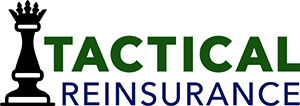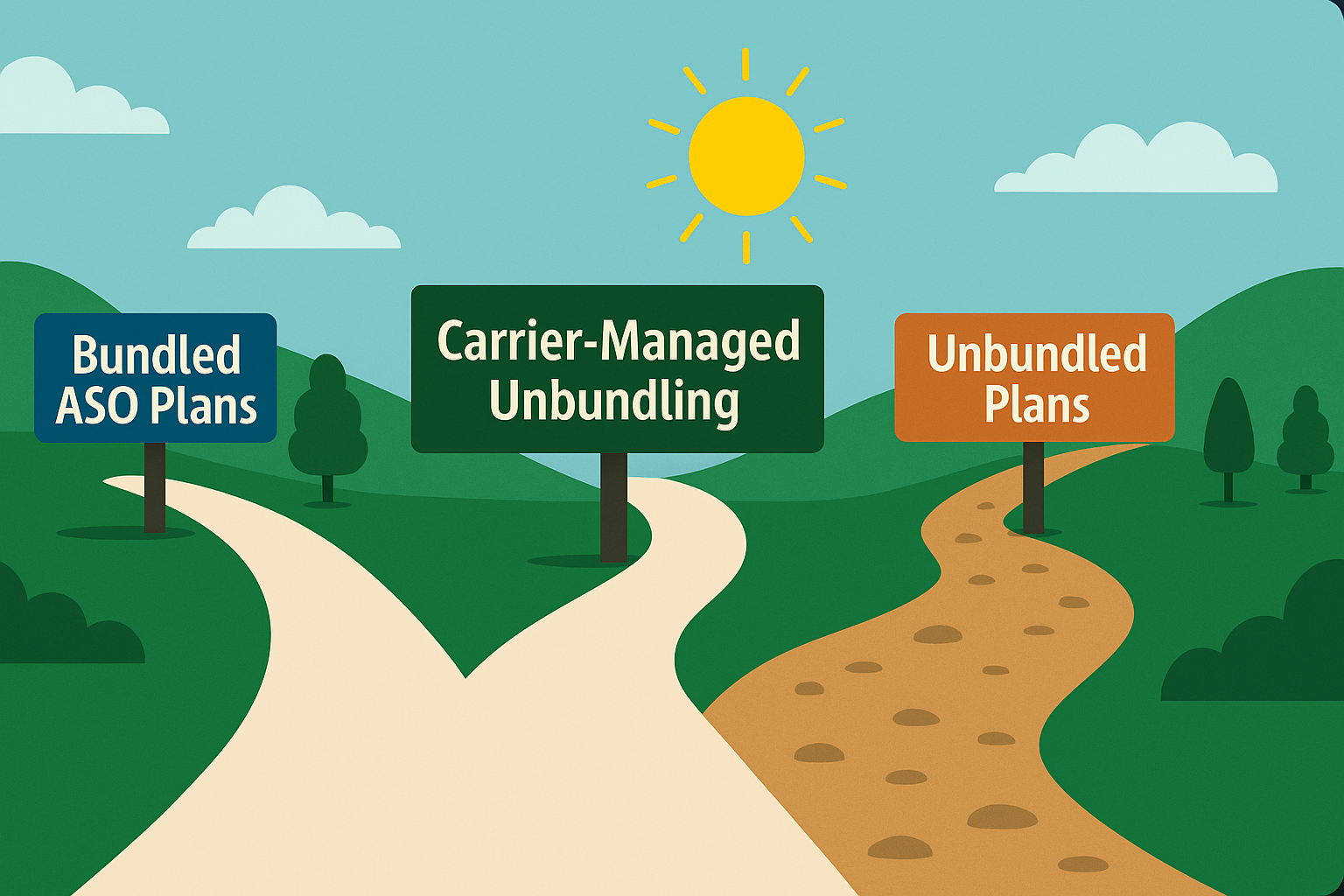Bundled vs. Unbundled Health Plans: There’s a Better Third Option
When it comes to structuring a self-funded health plan, brokers usually find themselves choosing between two familiar paths:
- The Bundled Route (Integrated ASO programs from the big players), or
- The Unbundled Stack (where the broker plays architect, assembling vendors one by one).
Each path comes with tradeoffs. But what if you didn’t have to settle for either extreme?
Enter Carrier-Managed Unbundling: a third option that blends the transparency and flexibility of a TPA-based stack with the structure and accountability of an integrated platform—anchored by the stop-loss carrier from day one.
Let’s break it down.
🧩 Bundled Health Plans (ASO Integration)
Why Brokers Choose It
- ✅ The Easy Button: One platform, one process. This is how most self-funded business is written.
- ✅ Job Security: Rarely will a client fire a broker for putting them with a major ASO.
- ✅ Seamless Coordination (on paper): Gaps in coverage are less likely—because the ASO owns the stack.
What’s Often Overlooked
- ⚠️ Conflicts of Interest: ASOs profit from claim volume (and their own mistakes). Think about that.
- ⚠️ Opaque Pricing: Good luck getting pharmacy rebates or network fee schedules.
- ⚠️ Weak Cost Containment: Who is really the client? Who’s interest are they protecting?
🔧 Unbundled Plans (Broker-Assembled Vendor Stack)
Why Brokers Consider It
- ✅ Customization: Allows you to match vendors to the group’s unique needs.
- ✅ Best-in-Class: Pick top performers in PBM, UR, navigation, etc.
- ✅ Strategic Positioning: Shows the broker is proactive and analytical.
Where It Gets Risky
- ⚠️ Vendor Mismatch: The stop-loss underwriter is told one thing… but the actual workflow tells another story.
- ⚠️ No Central Accountability: When something falls through the cracks, the client usually pays for it.
- ⚠️ Compliance Gaps: Brokers can unintentionally assume liability they weren’t trained or prepared to carry.
🛠️ Carrier-Managed Unbundling: The Best of Both Worlds
This is not a Frankenstein model. This is a curated ecosystem—built in collaboration with the stop-loss carrier, a trusted TPA, and a vetted vendor stack.
What Makes It Different?
- 🔐 Plan Language Aligned from Day One – The stop-loss carrier helps write the plan document, so the coverage mirrors the risk.
- 🔍 Transparency Without Chaos – You get visibility into network, pharmacy, and care management outcomes—without needing to manage 10 vendor contracts.
- 🤝 Fiduciary Confidence – Reduced conflicts of interest mean it’s easier for employers to meet ERISA standards.
- 🧱 Structured Integration – Like a general contractor who has worked with the same trades for years, the system runs tighter, smoother, and cleaner.
This isn’t casual. It’s strategic. Like marriage, it works well when you choose your partners wisely.
🤔 For Smaller Brokerages, This Is the Wake-Up Call
If you’re building custom vendor stacks to win on price—but don’t have the resources to manage implementation, audit performance, and align contracts—you’re not designing a solution. You’re hoping it holds.
And when it doesn’t, the stop-loss carrier isn’t your E&O insurer. It’s there to price coherent risk, not backstop disconnected workflows.
✅ You Can Offer More Than a Quote
With Carrier-Managed Unbundling, you can present something far more valuable than a lower number: a plan that performs because it was designed that way—with accountability, transparency, and cost containment baked in.
If you’re ready to stop selling spreadsheets and start selling strategy, let’s have a conversation.







